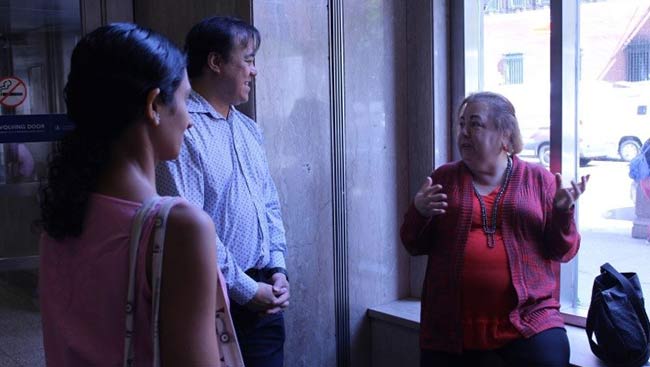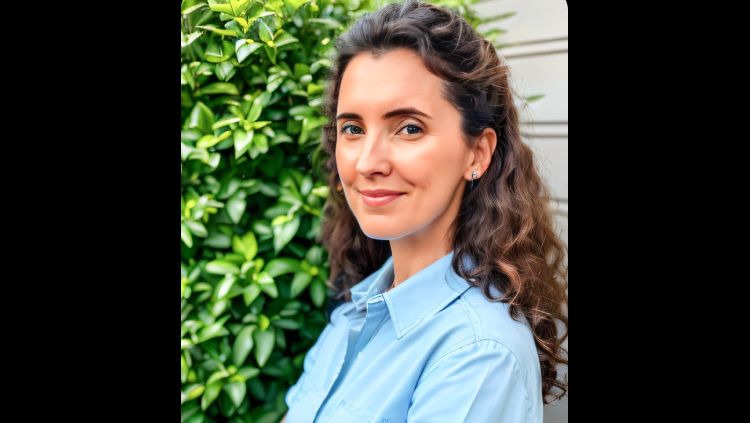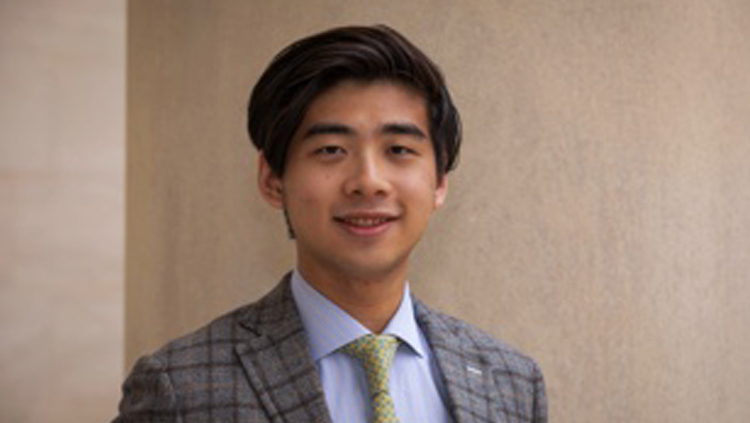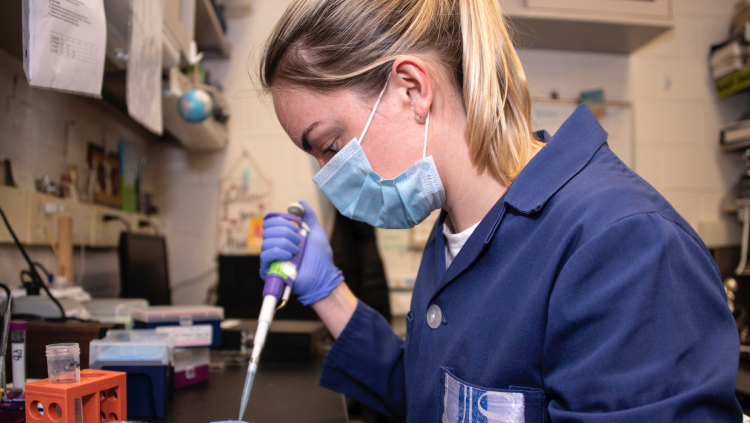
As an assistant professor at Columbia University, founder of the Greater New York City Chapter of SfN (braiNY), and active advocate for science funding, Haung (Ho) Yu’s perspectives on the benefits of outreach are far reaching.
He shares them here, focusing on what chapters, students, and faculty gain — for themselves and society — when they step into the community.
Why is it important for chapters to get involved with advocacy? How should existing chapters gauge the needs of their community and how does that play into establishing events?
Chapters are a natural epicenter for neuroscience resources so, incorporating advocacy into their outreach efforts makes sense. braiNY primarily consists of younger neuroscientists. We have excelled in reaching out to all community levels, from K-12 to the elderly, during events like Brain Awareness Week and the World Science Festival. Our next step is to communicate with public officials who are involved with critical decision making for education and research funding.
When establishing events, it’s important to naturally build on existing components within your chapter. Each chapter should determine its bandwidth as it considers how to address the community’s interests. Ideally, within a larger chapter, individuals will lead events they are interested in.
For example, the local advocacy group within our chapter, led by Sloka Iyengar and Abigail Kalmbach (current and former SfN Early Career Policy Ambassadors), recently facilitated a visit from Sen. Liz Krueger (D-NY) to the Taub Institute at Columbia University. Without their efforts, the visit would not have been possible.
Also, political officials and aides need information to act as our champions, and through chapter outreach, we can provide them salient information. The SfN advocacy team is a great resource for planning science, policy, and advocacy-based events and programs.
For neuroscientists, it is also important training for communication with public audiences: defining what we do as researchers and explaining why our work is critical for STEM education and public health, and providing a compelling argument for the value of research and why it deserves funding.
On top of research, why do you make time for outreach and advocacy as a professor? How has it enhanced your career?
Balancing outreach and advocacy with research and other priorities can be taxing, but I view this as a necessary part of my career and one that helps me hone my communication skills.
While promotion and career advancement are primarily determined by scholarly accomplishments, service to the university and community are also considered. For example, my outreach likely contributed to my appointment as a member of SfN’s Governance and Public Affairs Committee, which has been a positive addition to my career.
Having seen funding dwindle over the years, I also believe it’s important to engage with the public and politicians, especially to help them recognize the significance of neuroscience research, and in turn engender their support.
There are several benefits neuroscientists should consider: personal growth, enhanced communication skills, service to the community (including inspiring budding scientists), and ideally, increased funding.
Why is it important for graduate students to participate in advocacy activities, and how can they make the case to their PIs about this importance?
Graduate students should view advocacy as part of their training. Students are key to the success of outreach and advocacy events. It’s inspiring for the general public to see fresh faces to show a dynamic field, not just an older generation of scientists. For public officials, students represent hope for the future and provide a reason to support funding, since it’s not just for research, but also science education.
For a PI, it is a challenge because any time away from the lab is less time in the lab. The goal is to find balance. Advocacy should not consume all of your activities, but as a trainee, it is important to recognize the benefits of your advocacy work.
Trainees can explain that being an advocate to the public and politicians will hopefully increase funding, including to their PIs’ labs. Second, they can demonstrate that they will learn critical communication skills that aren’t focused on during training but are essential to champion research or present at meetings.
What kind of discussions are best suited for a meeting with a state legislator as opposed to a federal legislator?
Discussions with federal legislators primarily revolve around asking for support and expressing thanks for funding. There has been an increasing trend for state legislatures to support more public university funding and scientific research, such as bond bills for stem cell research funding in California and developing higher education infrastructure programs in Kentucky and Virginia. Ultimately, the most important part of advocacy is identifying what information your local representative or their policy aides need.
For example, during Sen. Krueger’s recent visit to the Taub Institute for Research on Alzheimer’s Disease and the Aging Brain, we discussed the personal, financial, and public impact of Alzheimer’s on the community and why research is imperative. We also brainstormed why New York State should get involved and new ways to garner greater support to fund research in the state.
We were fortunate to have quality time with our state senator, a luxury not often afforded on Capitol Hill Day as constituents typically meet with policy aides. An important aspect for Hill Day and for Sen. Krueger’s visit was to prepare information and anticipate needs for our legislators. Our state visit was more focused on support for Alzheimer’s disease whereas on Capitol Hill we focused on general support for NIH and NSF.
How can neuroscientists prepare and feel confident going into a meeting with their state officials?
In our initial preparation, we worked out the lab tours and planned out the logistics and timing at each location. We made every minute count, from the time we met in the lobby to the end of the meeting and any time in between (including waiting for the elevator). So, when you’re planning, be sure to consider every minute in the visit.
Preparing a packet of information beforehand that includes additional reading material on the topics discussed is very helpful. For VIP visits, make sure to get clearance from your local institute. For our visit, this included the director of the Taub Institute and the vice president for government and community affairs and security. We also asked our university media team to document the visit, after advance clearance from the Senator’s office. Senator Krueger’s team were very helpful and obliging, making the experience a delight.
Following up is important to keep the discussion moving forward. This may include additional visits or expanding your audience by hosting community forums. The goal is to build deeper relationships where neuroscientists can work with public officials to achieve mutual science education and health goals.
What impacts have you seen from advocating and what led to those successes?
Measurable change from public advocacy and outreach does not happen overnight and requires continual nurturing. Yet, over time its impacts can be meaningful.
The first step is to spark the curiosity of the public by making science relevant to their lives. It’s important to not just argue science for science sake, but how it impacts society.
In my area of research, advocating for more Alzheimer’s funding has paid off. It has taken years, but continued efforts led to the National Alzheimer’s Project Act (Public Law 111-375), which, in turn, has led to increased funding for Alzheimer’s research and related disorders. It was through a concerted effort of many groups and multi-level discussions about the importance of public funding for researching a cure that led to these milestones.
*Photo provided by author.
Speaker






